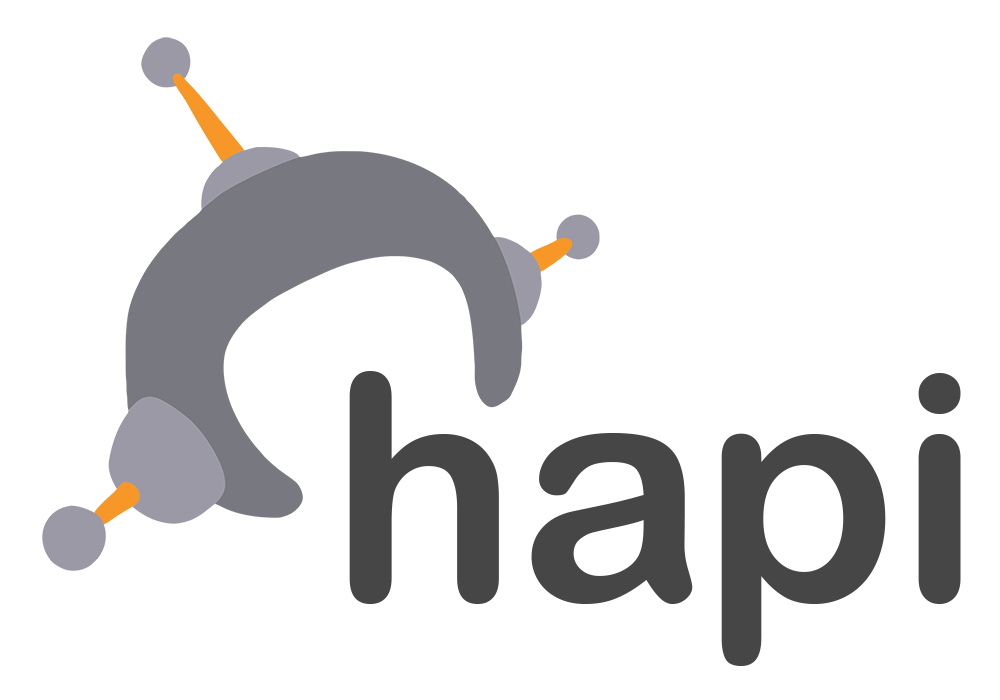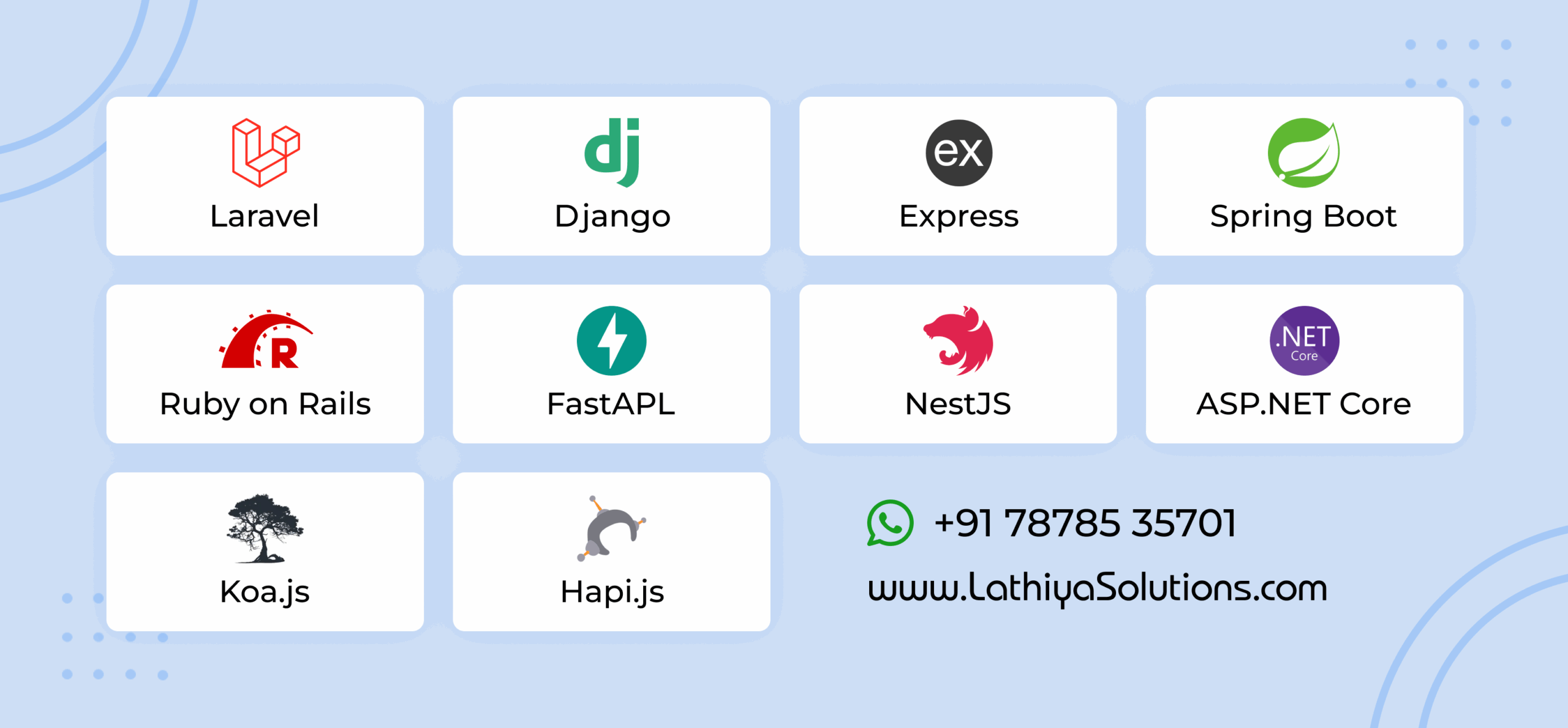In today’s fast digital world, backend frameworks play an important role in how websites and applications function behind the scenes. They handle everything from server-side logic and database operations to performance optimization and security. As user expectations grow and business needs become more complex, developers rely on structured backend tools that help deliver reliable and scalable digital products.
This year, we are seeing major advancements in how backend systems are being built and managed. With an increasing focus on speed, flexibility, and long-term sustainability, the top backend frameworks are enabling development teams to create web solutions that perform better, scale faster, and integrate more seamlessly. In this blog, we highlight the frameworks that are leading the way and explain why they are becoming the go-to choices in modern web backend development.
Advantages of Using a Backend Framework
- 1. Faster Development Process A backend framework provides built-in tools and libraries that help developers avoid writing repetitive code. This accelerates project timelines and allows teams to launch applications more quickly.
- 2. Improved Code Organization Frameworks follow structured patterns like MVC (Model View Controller), which helps maintain clean, modular code. This makes it easier to manage large projects and scale them over time.
- 3. Enhanced Security Features Many frameworks come with pre-configured security tools that help prevent common threats such as SQL injection, CSRF, and XSS. This reduces the risk of data breaches and strengthens application safety.
- 4. Strong Community and Support Popular backend frameworks have large communities, active forums, and detailed documentation. This makes troubleshooting easier and provides access to plugins, extensions, and regular updates.
- 5. Cross-Project Reusability Code written using a backend framework is often reusable across multiple projects. This increases efficiency and ensures that proven methods are consistently applied in future development.
Top Backend Frameworks Dominating Web Development in 2025
1. Laravel (PHP)
Pros:
- Clean and expressive syntax makes development faster and more enjoyable
- Strong ecosystem with built-in tools for authentication, caching, and task scheduling
- Large, active community with extensive learning resources
- Excellent for projects that need content management and structured routing
Cons:
- Performance can be a limitation for real-time or event-driven systems
- Can become slow under high concurrency without careful optimization
Planning to develop with Laravel? Partner with Lathiya Solutions for custom PHP development services that deliver performance, security, and long-term scalability.
2. Django (Python)
Pros:
- Highly secure with built-in protection against common vulnerabilities
- Comes with almost everything out-of-the-box, including admin panel and ORM
- Encourages clean and maintainable code
- Scales well for complex and data-driven web platforms
Cons:
- Overkill for simple websites or lightweight APIs
- Less flexibility in design patterns compared to microframeworks
3. Express (Node.js)
Pros:
- Lightweight and minimal, offering flexibility for custom architecture
- Fast execution and great performance with asynchronous processing
- Ideal for microservices and real-time apps
- Easy integration with frontend JavaScript frameworks
Cons:
- Lack of structure can be a challenge in large-scale applications
- Requires additional setup for security, testing, and data modeling
4. Spring Boot (Java)
Pros:
- Production-ready with powerful tools for security, data handling, and RESTful APIs
- Enterprise-grade scalability and robust architecture
- Strong community support and mature documentation
- Good fit for complex domain logic and high-security requirements
Cons:
- Learning curve is steeper, especially for beginners in backend development
- Heavier compared to minimalistic frameworks
Also Read: Magento vs WordPress
5. Ruby on Rails (Ruby)
Pros:
- Fast development cycles with conventions that speed up coding
- Built-in testing tools and ORM for database interactions
- Emphasizes clean, readable code and developer happiness
- Great for launching MVPs and startups quickly
Cons:
- Performance can decline under high load or traffic
- Fewer modern updates compared to newer frameworks
6. FastAPI (Python)
Pros:
- Exceptional speed and performance using asynchronous capabilities
- Built-in data validation and automatic API documentation
- Modern, type-safe syntax ideal for collaborative development
- Optimized for microservices and machine learning applications
Cons:
- Community and ecosystem are still growing compared to Django
- Some features require deeper Python knowledge to implement fully
7. NestJS (Node.js)
Pros:
- Built with TypeScript, offering type safety and modular architecture
- Supports microservices and GraphQL out of the box
- Well-structured for large-scale enterprise-grade applications
- Smooth integration with modern backend tools and frontend frameworks
Cons:
- Learning curve is higher for those unfamiliar with TypeScript or Angular-style architecture
- Can feel over-engineered for small or simple projects
Also Read: The Complete Guide to Harden WordPress Security in 2025
8. ASP.NET Core (C#)
Pros:
- High-performance backend framework suitable for enterprise development
- Cross-platform support with strong security and built-in identity management
- Backed by Microsoft with long-term support and excellent documentation
- Ideal for apps deployed on Azure and integrated with Microsoft services
Cons:
- Requires knowledge of C# and .NET ecosystem
- Smaller community support outside the enterprise and Windows environments
9. Koa.js (Node.js)
Pros:
- Lightweight and flexible, allowing better control over middleware
- Uses async/await for cleaner and more readable asynchronous code
- Ideal for creating custom backend architecture from scratch
- Built by the same team as Express for a familiar development feel
Cons:
- Minimalist approach means more setup and configuration required
- Smaller ecosystem with fewer plugins and learning resources
10. Hapi.js (Node.js)

Pros:
- Configuration-driven with powerful built-in validation and caching
- Focus on security, scalability, and maintainability
- Good plugin system for extending functionality
- Suitable for building large-scale RESTful APIs
Cons:
- Less intuitive for beginners compared to Express
- Smaller community and ecosystems may limit available learning material
These top backend frameworks dominating web development in 2025 are built to meet the demands of faster, more scalable, and secure digital platforms. Choosing the best backend framework depends on your project’s complexity, your team’s expertise, and the features you aim to deliver. Whether you are using JavaScript backend frameworks for real-time experiences or relying on structured platforms like Spring or Django for enterprise-grade backend server development, staying updated with these most popular backend frameworks in 2025 helps you build with confidence.
FAQ
1. How do I choose the right backend framework?
It depends on your project’s size, features, team skills, and scalability needs. For example, Django suits data-heavy sites, while FastAPI is ideal for fast, lightweight APIs.
2. What is the biggest backend challenge in 2025?
Balancing speed, security, and scalability. Developers must handle real-time demands with frameworks that support efficient scaling.
3. How does backend framework choice affect SEO?
It affects on-site speed and content delivery, which influence SEO. Fast frameworks like FastAPI or Express boost performance and user experience.
4. How can I build my website backend with Lathiya Solutions?
Contact us at 7878535701 to discuss your project. We will guide you in choosing the right backend framework and deliver a tailored, scalable solution
Read More Blogs:
